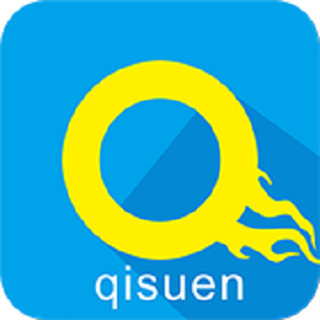
文章发布:奇速英语 发布时间:Feb 10, 2022 2:19:11 PM 访问量:450

(一)词汇与听力 2.morning n.早晨;上午['mɔːnɪŋ] 3.I pron.我[aɪ] 4.am v.是[æm] 5.welcome interj.&欢迎['welkəm] 6.to prep.到,对,向,在…之前(动词不定时符号,无词义)[tuː] 7.China n.中国['tʃaɪnə] 8.thank v.谢谢;感谢[θæŋk] 9.you pron.你;您;你们[juː] 10.the art.这/那个;这/那些[ðə] 11.the USA 美国;美利坚合众国 12.the UK 英国;联合王国(包括大不列颠及北爱尔兰) 13.hello interj.喂,你好[hə'ləʊ] 14.are v.是[ɑː] 15.yes inrerj.是;同意[jes] 16.no interj.不;不是;没有det.没有,无[nəʊ] 17.not adv.不;没有[nɒt] 18.oh interj.哦;啊[əʊ] 19.nice adj.令人愉快的,友好的[naɪs] 20.meet v.结识;遇见[miːt] 21.too adv.也;太;很[tuː] 22.hi interj.喂[haɪ] 23.thanks interj.&n.感谢,谢谢[θæŋks] 24.Mr.=Mis tern.先生 25.see v.遇见;看到;明白[siː] 26.mom (mum)n.妈妈 27.this pron. &det.这;这个[ðɪs] 28.is v.是[ɪz] 29.my det.我的[maɪ] 30.teacher n.老师,教师['tiːtʃə] 31.how adv.怎样;多少;多么[haʊ] 32.do v.avx.构成否定句,疑问句的助动词,无词义[duː] 33.dad n.爸爸[dæd] 34.Miss n.女士,小姐[mɪs] 35.Ms. n.女士[mɪz] 36.afternoon n.下午['ɑːftə'nuːn] 37.goodby einterj.再见[ˌgʊd'baɪ] 38.by einterj.再见[baɪ] 39.fine adj.健康的;晴朗的[faɪn] 40.and conj.和[ænd] 41.OK adj. (口语)安然无恙interj. 好,行[əʊˈkeɪ] 42.here adv.在这里 [hɪə] 2、Topic 2 2.me pron.我[miː] 3.what prin.什么[hwɒt] 4.your det.你的;你们的[jʊə] 5.name n.名字;名称[neɪm] 6.please interj.请[pliːz] 7.where adv.在/到哪里[hweə] 8.from prep.来自;从[frɒm] 9.Canada n.加拿大['kænədə] 10.America n.美国[ə'merɪkə] 11.Japan n.日本[dʒə'pæn] 12.England n.英国['ɪŋglənd] 13.they pron.他/她/它们[ðeɪ] 14.who pron.谁[huː] 15.Cuba n.古巴 16.he pron.他[hiː] 17.she pron.她[ʃiː] 18.look v.看;看起来[lʊk] 19.telephone n.电话[fəʊn] 20.number (NO.)n.号码;数字;数量 21.it pron.它 [ɪt] 22.very adv.非常['veri] 23.much adv.非常,很;det. 多少,许多,大量[mʌtʃ] 24.very much 非常,很 25.that pron.&det.那,那个[ðæt] 26.zero num.零['zɪərəʊ] 27.one num.一pron. 一(个,只…)[wʌn] 28.two num.二[tuː] 29.three num.三[θriː] 30.four num.四[fɔː] 31.five num.五[faɪv] 32.six num.六[sɪks] 33.seven num.七['sevn] 34.eight num.八[eɪt] 35.nine num.九[naɪn] 36.ten num.十 [ten] 37.her det. 她的pron. 她 [hɜː] 38.family n.家庭;家族['fæmɪli] 3、Topic 3词汇 1.twelve num.十二 [twelv] 2.year n.年 [jɪə] 3.old adj.---岁的;老的,旧的 [əʊld] 4.class n.班级,课 [klɑːs] 5.in prep.在---里;用;以;穿着,戴着adv.在家; 在里面 [ɪn] 6.grade n.年级 [greɪd] 7.eleven num.十一 [ɪ'levn] 8.thirteen num.十三 ['θɜːtiːn] 9.fourteen num.十四 ['fɔː'tiːn] 10.fifteen num.十五 ['fɪf'tiːn] 11.sixteen num.十六 [ˈsɪksti] 12.seventeen num.十七 [sevənˈtiːn] 13.eighteen num.十八 [ˈeɪˈtiːn] 14.nineteen num.十九 [naɪnˈtiːn] 15.twenty num.二十 [ˈtwenti] 16.English n.英语adj.英国的;英语的;英国人的['ɪŋglɪʃ] 17.eraser n.橡皮,黑板擦 [ɪ'reɪsə] 18.map n.地图 [mæp] 19.pen n.钢笔 [pen] 20.pencil n.铅笔 ['pensl] 21.desk n.书桌[desk] 22.an art.一(个,件…)[æn] 23.spell v.拼写[spel] 24.a art.一(个,件…)[eɪ] 25.can modal v.能,会 [kæn] 26.apple n.苹果 ['æpl] 27.toy n.玩具 [tɔɪ] 28.wow interj.呀,哇 [waʊ] 29.try v.试;试图,努力 [traɪ] 30.again adv.再一次 [ə'gen] 31.those pron. & det.那些的 [ðəʊz] 32.book n.书;本子v.预约,预定 [bʊk] 33.these pron. & det.这些 [ðiːz] 34.let v.让 [let] 35.help v.& n.帮助 [help] 36.ruler n.尺子 ['ruːlə] 37.car n.小汽车,轿车 [kɑː] 38.egg n.蛋 [eg] 39.orangen. 柑橘;橘黄色adv.橘黄色的 ['ɔːrɪndʒ] 40.bus n.公共汽车 [bʌs] 41.box n.箱,盒 [bɒks] 42.now adv.现在 [naʊ] 43.school n.学校 [skuːl] 44.Beijing International School 北京国际学校 45.his pron. & det.他的[hɪz] 46.same adj.相同的pron. (和…)同样的事物[seɪm] 47.but conj.但是,可是 [bʌt] 48.friend n.朋友 [frend] 49.junior adj.初级的 [ˈdʒuːnɪə] 50.high adj.高的adv.在高处,向高处 [haɪ] 51.junior high school 初中 52.girl n.女孩 [gɜːl] 53.we pron.我们 [wiː] 54.student n.学生 ['stjuːdənt] 55.speak v.讲,说;谈话 [spiːk] (二)重点短语 1. good morning/ afternoon / evening 早上/下午/晚上好 2. glad / nice to meet / see you 见到你很高兴 3. welcome to + 地点 欢迎来到…… 4. let’s + v 让我们做…… 5. stand up 起立 6. sit down 坐下 7. this is... 这是…… 8. thanks = thank you 谢谢 9. see you = see you later = goodbye 再见 10. ID number 身份证号码 11. be from=come from 来自 12. in English 用英语 (三)重要句型 1. ---What’s your name? ---My name is Sally. 2. ---Where are you from? ---I’m from China. ---Where do you come from? ---I come from China. 3. ---Where is he/ she from? ---He/She is from Japan. 4. ---What’s this/ that in English? --- It’s a/ an… 5. ---What’re these/ those in English? ---They’re… 6. ---How do you spell it? ---E-R-A-S-E-R, eraser. 7. ---Can you spell it? ---Yes, M-A-P, map. 8. —How old are you/ is he/ are they? —I’m/ He is/ They are eleven. 9. —What’s your telephone number? —It’s 4567967. 10. —What class/ grade are you in? —I’m in Class Ten, Grade Seven.(注意大小写) 11. Good morning/ afternoon/ evening. 12. —Hello!/Hi! —Hello!/Hi! 13. —Nice/Glad to see/meet you. —Nice/Glad to see/meet you, too. 14. —Welcome to China/my home. —Thanks. 15. —How do you do? —How do you do? 16. —How are you? —Fine, thank you. And you? —I’m OK. 17. —See you then/ later. —See you. 18. —Goodbye. —Bye. 19. —Thank you. —You’re welcome./That’s OK./Not at all. (四)知识点梳理拓展 1、topic1 (1)动词be的用法,动词be有三种形式:am, is, are, 它们都是“是”的意思,被称为“be动词”。 (a) am用于第一人称单数I。其完全形式是I am ...,缩写形式是I’m ...,但I am在句末时不能缩写。例句:I am/I’m Li Lei. 我是李雷。Are you Mr. Li? Yes, I am. 你是李先生吗?是的,我是。 (b) is用于第三人称单数。例句:My teacher is Miss Yang. 我的老师是杨小姐。 (c) are用于第二人称单数、复数或第一人称复数和第三人称复数。例句:You are Li Ping.你是李平。My mom and I are at home. 妈妈和我都在家。 (2)打招呼时常用的交际用语 (a)How are you?用于熟人之间,表示问候。回答用Fine./I’m fine./I’m OK.Thanks. (b)How do you do?用于初次见面,伴随握手动作,是表示庄重、礼貌的正式问候语。回答仍用How do you do? (c)Nice to meet you.经人介绍认识对方,礼节性地互致问候。对方用Nice to meet you, too.来回答。 (d)Hi!和Hello!是熟悉的人之间打招呼或非正式的问候语,回答也用Hi!和Hello!意思均为“你好!” 2、topic2 (1)Where is she from?或Where’s she from?这是询问某人来自何处的一个特殊疑问句。 Where are you from?你来自哪里? I’m from China.我来自中国。 (2)What is your name?或What’s your name?这是询问某人姓名时常用的一个特殊疑问句,回答时常用My name is ...或I’m ... What’s your name? 你叫什么名字? My name is Jane. 或I’m Jane. 我叫简。 (3)I, you, he, she, it, we, they是人称代词的主格形式,用作主语。my, your, his, her是形容词性物主代词,用在名词前,作定语。 She is from Japan. Her name is Kumiko. 她来自日本。她的名字叫久美子。 (4)英语字母在什么情况下大写? (a)英语句子的第一个词的第一个字母要大写。 (b)姓名中的姓和名的首字母都要大写。如:Wang Ping王平, Sima Qian司马迁, Fan Zhiwei范志伟。 (c)国家、城市、乡镇等地点名称的首字母要大写。如Canada加拿大,Tokyo东京。 (d)表示语言、某国人等词的首字母要大写。如:English英语,German德国人。 (e)表示职务或称呼的首字母要大写。 (f)人称代词“I”和单词“OK”总是大写。 3、topic3 (1)基数词:英文的数词一般用阿拉伯数字表示,也可用英文单词的形式表示,读时按英文单词的读法来读。电话号码、车牌号等要逐个地读,其中“零”可读作字母o的读音,也可读作zero,两个相同的数字在一起时可读作double ... 如 6250-2533读作:six two five zero(o), two five double three。 数字十三到十九通常是在个位数后加-teen, 但个别需作适当调整。如: three—thirteen、four—fourteen、five—fifteen、six—sixteen、seven—seventeen、eight—eighteen、nine—nineteen (2)名词按其所表示的事物的性质分为可数名词和不可数名词两种,可数名词有单数、复数两种形式,可数名词的复数变化规则如下: a.一般在词尾加-s。如:desk—desks, pen—pens b.以s,x,ch,sh结尾的加-es。如:class—classes, box—boxes c.以辅音字母加-y结尾的变-y为-i,再加-es。如:country—countries, lady—ladies d.以f或fe结尾的变f或fe为v,再加-es。如:knife—knives, leaf—leaves e.以o结尾的名词加-s或-es。如:potato—potatoes, hero—heroes,photo—photos f.部分名词变复数为不规则变化。如:man—men, foot—feet, sheep—sheep (3)指示代词this, that, these, those, this这,这个,指近处的人或事物。these是this的复数,表示“这些”。that那,那个,指较远处的人或事物。those是that的复数,表示“那些”。 通常问句中的this, that作主语时回答用it。如:What is this? It is a book. these, those作主语时回答用they。如 What are those? They are buses. (4)英语中,有编号的事物,通常把名词放在数词前,且名词第一个字母大写,数词若为英文单词,第一个字母也应大写。如:一年级Grade 1或Grade One、第三课 Lesson 3或Lesson Three (5)与汉语不同,英语中单位大小的排列通常是由小到大,并用逗号隔开。如:中国北京 Beijing, China;五年级三班 Class 3, Grade 5;第一排第三号Number 3, Row 1。 (五)重点语法 1. 元音字母:Aa Ee Ii Oo Uu 包含有以下元音的字母: [e] Aa Hh Jj Kk [i:] Ee Bb Cc Dd Gg Pp Tt Vv [aɪ] Ii Yy [ju:] Uu Qq Ww [e] Ff Ll Mm Nn Ss Xx Zz 2. 大小写 句首字母,人名,地名,称呼语,专有名词,星期的首字母要大写,引人注意。 Look!Is that Jane? He comes from Hubei, China. Mr. Wang, this is my mom. —What class are you in? —I’m in Class Ten, Grade Seven. On Sunday, we go to the West Hill for a picnic. 3. Be动词的用法 • 我用am,你用are,is用于他、她、它,单数用is,复数就用are。 • 含be动词的陈述句变否定句在be后加not,变一般疑问句将be提前。 • 一般疑问句的肯定回答:Yes, 人称代词+ be;否定回答:No, 人称代词+be + not。 如:---They are teachers. ---They are not teachers. ---Are they teachers? ---Yes, they are./ No, they aren’t. 4. 不定冠词、定冠词和and的用法 (1)不定冠词a, an的用法 a /an 都表示“一,一个”,a 用在以辅音音素开头的单词前,如:a book; a desk; an 用在以元音音素开头的单词前,如:an apple / an orange/ an English book;/ an English boy/ an old man;/an actor/ an English teacher/ an office worker. (2)the是定冠词,表特指,单复数前面都可用 • We are in the same class. • The girl in a pink skirt is Jane. • Where is the book? • This isn’t my bike. The blue one is mine. (3) and的用法 数字相加看做单数:Two and three is five. 颜色相加也是单数: Black and white is gray. 人和事物相加是复数:Lucy and Lily are sisters. The pen and the eraser are Jane’s. 5. 可数名词单数变复数 (1)规则变化 ① 一般在名词词尾加-s,如:car---cars; photo---photos; toy---toys; boy---boys ② 以s, x, ch, sh结尾的词,在词尾加--es,如:box---boxes; bus--buses ③ 以辅音字母+y结尾,变y为i再加es,如:baby--babies; family--families 4)以fe结尾,变fe为v再加es,如:knife--- knives (2)不规则变化 如:foot---feet; man---men; woman---women; snowman---snowmen; (3)集体名词:people, clothes, police, family (4)成双出现的名词:shoes, pants(trousers), gloves, eyes, ears 九. 一词多义:An orange(桔子)is orange(橙色的). 温馨提示:版权归原作者所有,推广的内容如有侵权,请您告知我们会在第一时间处理或撤销;互联网是一个资源共享的生态圈,我们崇尚分享。 通英语智能学习机内置奇速英语精品套装:思维导图记单词、24个故事串记高中3500词汇、英语快速阅读写作、8招突破核心语法、英语时文个性阅读、大数据分析及智能推送等;大屏护眼,无法游戏,减负增效!
分享本文后加客服,获赠“课本单词速记卡”或天天更新的“英语时文阅读小程序”畅读卡一张!(客服微信:13980503458/17760376675/13982203753/18054788785)

相关推荐
揭秘奇速英语时文阅读:如何用“四位一体”法,将阅读效率最大化?
英语阅读提分难?这款APP含200本书量,名师原创+天天更新,都说好
这个寒假,把孩子交给奇速,收获一个自信开口的“英语小达人”!
中考英语核心反义词100组(含20组高频重点)
专业八级师资+AI精准诊断:奇速英语的黄金教学法则
 更多优质学习内容
更多优质学习内容




 13980503458
13980503458
 admin@qisuen.cn
admin@qisuen.cn